Are you struggling to maintain consistency in your golf swing?
Through the analysis of over 100,000 recorded swings using Hackmotion, we’ve found a common problem: many golfers tend to “flip” their wrists at Impact. Flipping the golf ball likely indicates that you’re not attaining the desired impact ranges, making it highly challenging to achieve consistency in your swing.
What exactly is flipping or early release?
It is a swing pattern where at Impact, the golfer’s lead wrist goes into extension, and the clubhead surpasses the golfer’s hands right before the contact. This action increases the club’s loft, resulting in a high ball flight trajectory.

People who flip may still manage to produce straight shots, even with wrist extension at Impact. However, the problem lies in the necessity of timing the flip perfectly on every swing to maintain consistency. Additionally, they tend to lose distance due to the elevated launch angle and reduced swing speed.
It’s crucial to recognize that flipping is a symptom not a cause. If you ever want to fix your flip you should first identify and address the root cause.
In general, golfers tend to flip the ball due to two main reasons: either they have an open clubface at the start of the downswing, or they are stalling their body with a squared clubface.
1. Too much extension in the downswing
This category includes people who flip the ball due to not too much extension in the transition which means they have an open clubface at the start of the downswing.
This is the most common cause of flipping among amateur golfers. The majority of golfers tend to have an open clubface at the top of their swing and as they initiate their downswing. After this motion, your body reacts to the open clubface during the downswing and, in a last-minute effort tries to square the clubface by flipping the wrists..
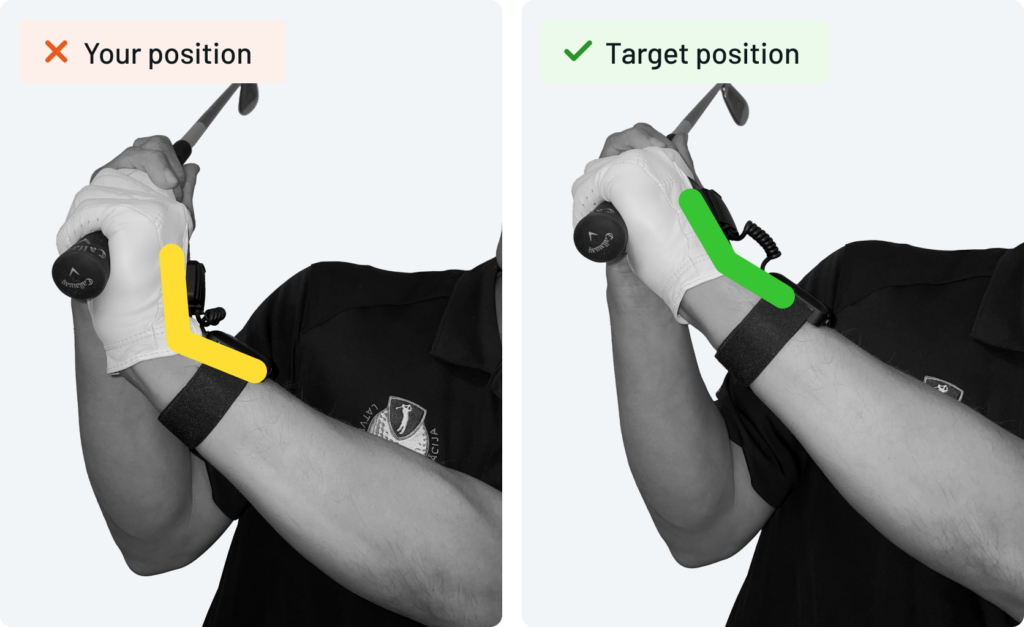
To identify this pattern using HackMotion, refer to the swing graph, where you can observe whether or not you managed to flex your wrists enough in the downswing. If you don’t flex your wrists enough, most likely you have an open clubface in your downswing.
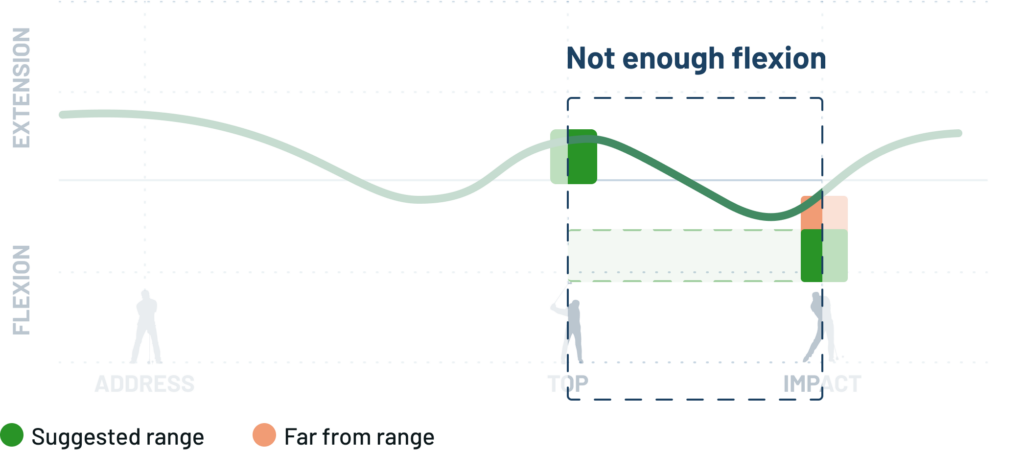
For golfers with this pattern, the most frequent misses include pushes and slices, with occasional straight shots that have a high ball flight.
How to fix this?
Try the motorcycle drill to feel the correct motion of flexing your wrists and enforce your muscle memory. In this drill try to focus your training on the start and transition journey of the swing.
2. Enough flexion in the downswing but flipping the ball before Impact
Often these are people who manage to get enough flexion in the downswing but they are still flipping the ball. Even if they initially manage to square the clubface at the beginning of the downswing, many golfers struggle to maintain body rotation and therefore often stall their body right before impact.

To identify this flipping pattern using HackMotion, refer to the swing graph and check if you have managed to get into flexion in transition but then see a sharp increase in extension right before impact. If yes, then you are most likely flipping the ball due to body stalling issues.
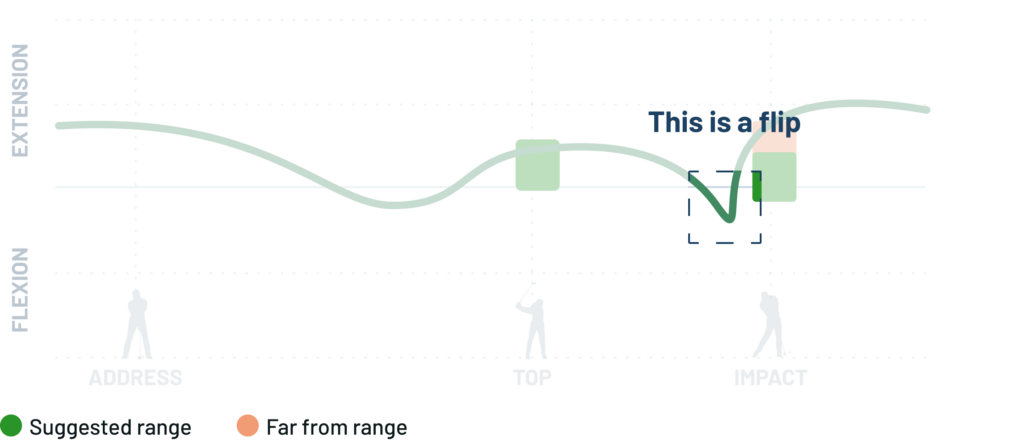
Most common misses that people with this swing pattern experience are pulls or pull hooks. Because the clubface is typically squared in the downswing, when golfers flip their wrists, the lead wrist extends just before impact. This extension closes the clubface even more in relation to the target line.
NOTE: Because of the way how HackMotion sensor works, there might be some cases where a pull or pull hook, which in reality is caused by flipping, might still appear as “in-range” in HackMotion practice mode but in reality it is a flip. To confirm this, carefully examine your swing graph and pay particular attention to any sudden increase in extension through impact if you suspect this is happening.
How to fix this?
Body stalling right before the Impact is a tricky thing to fix as there are several swing faults which might cause this, such as:
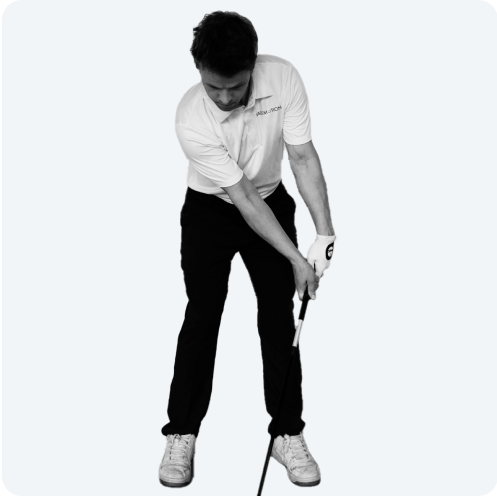
1.Setup issues
Make sure that your grip is not too “Palmy” or that you do not have your golf handle pulled back.
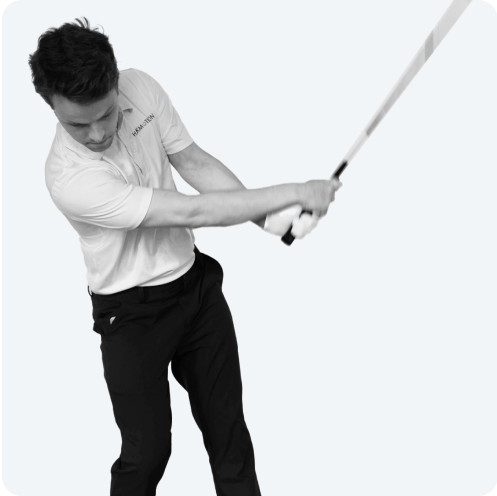
2.Putting weight on the trail leg in the downswing
At impact the majority of the body weight (around 80%) should be on the left side and the right heel should have started to lift and be very light at impact.
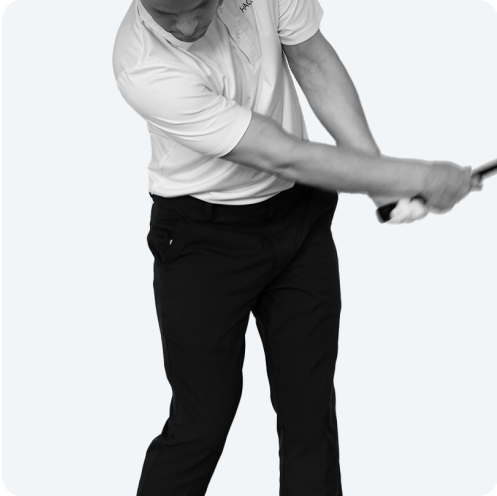
3.Poor body rotation
If there is a lack of body rotation during the downswing, the only option for the club to reach the ball is for the hand to surpass the body.

4.Hips spinning too early
Pro golfers accelerate their arms earlier than amateurs initiating the hips simultaneously with arms. The vast majority of amateurs move their hands much later than hips.
Final Thoughts
To find out more on how to fix each of these swing faults that causes a flip and what drills to use for improvements go to the HackMotion app section Learn, where you will find a subsection called Swing Faults. There you will find all the information you need on diagnosing and fixing your swing faults.
Fixing your Impact position especially if it is a flip can be quite challenging, even more so when some of your shots seem to go straight down the middle. Making swing changes can initially worsen your game before you will get better, this is just how it should be. However, if you aspire to have confidence in your swing, eliminating the flip is crucial.